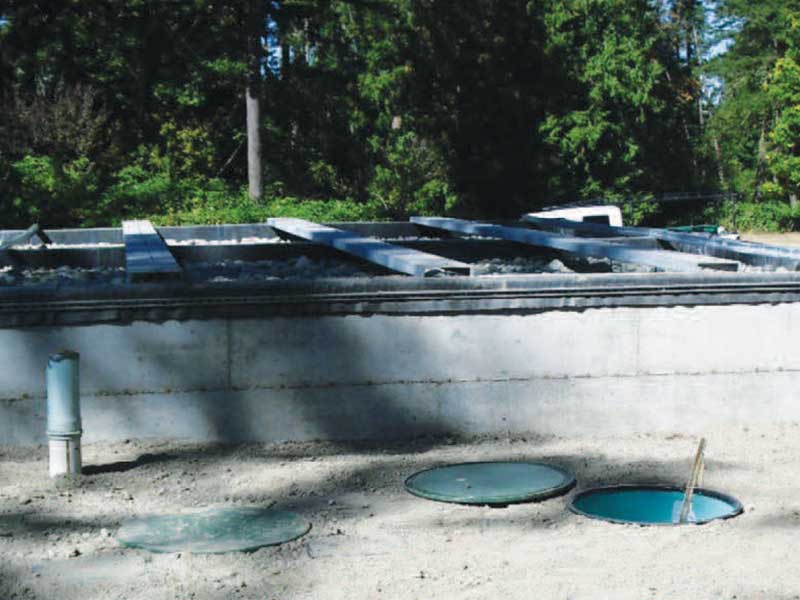Search

WA State Parks Lower Discharge Levels and Achieve Sustainability
SERVICE: Construction; Start-up/Operations
TECHNOLOGY: Denitrification
SUSTAINABLE/WATER RE-USE: Sustainable Media/Natural Treatment

LOCATION: Mount Vernon, WA
DESCRIPTION: The treatment system upgrade included installing Two VBT 300 Aerators in a new 20,000 Gallon Xerxes Fiberglass Tank to help reduce the biologic loading prior to AdvanTex AX100 Treatment. The AdvanTex Treatment System included four, AX100’s for Secondary Treatment and Nitrification.
ENR Technologies, LLC (ENR) recently installed a denitrification upflow filter for Washington State Parks at the Park Wide Wastewater Treatment System for Bay View State View Park located in Mount Vernon, WA. Bay View State Park is a 25-acre camping park located on Padilla Bay that serves 62 Tent Camping Sites, 31 RV Camp Sites, 6 Cabins, 2 Comfort Stations, a shop, office and a permanent residence. The existing septic tank treatment system needed an upgrade to meet HQE (High Quality Effluent) discharge requirements being imposed by the State of WA DOH (DOH). Effluent limits for the site are <10 CBOD5, <10 TSS, <10 TN and <14 FC (Geometric Mean).
The treatment system upgrade included installing Two VBT 300 Aerators new 20,000 Gallon Xerxes Fiberglass Tank to help reduce the biologic loading prior to AdvanTex AX100 Treatment. The AdvanTex Treatment System included four, AX100’s for Secondary Treatment and Nitrification. An additional AX100 was used after the ENR Denite Filter for effluent polishing. The final step treatment was UV disinfection prior to the discharge of effluent to the drainfield.
The ENR Denitrification Upflow was installed along with an alkalinity feed system to meet the 10 mg/l Total Nitrogen requirements for the upgraded system. The denitrification upflow filter was constructed of concrete partially above grade (20’ by 30’ plan area) to avoid groundwater issues. The peak flow permitted is 7,056 gpd, however, the filter sizing is based on the monthly average flow of 3,500 gpd.
Fextex Systems, Inc. provided all the major treatment equipment for the project and are the representatives for ENR in Oregon and Washington. Bob Nation, President of Fextex, enjoys working with ENR, “ENR has a great product that is helping owners meet the new low Total Nitrogen standards in a sustainable fashion. The wood based media is a cost effective and minimal maintenance approach to addressing the denitrification requirements that many onsite wastewater treatment systems must meet under recent regulations.”
For more information, please click the ‘Contact’ tab to reach out to us.
